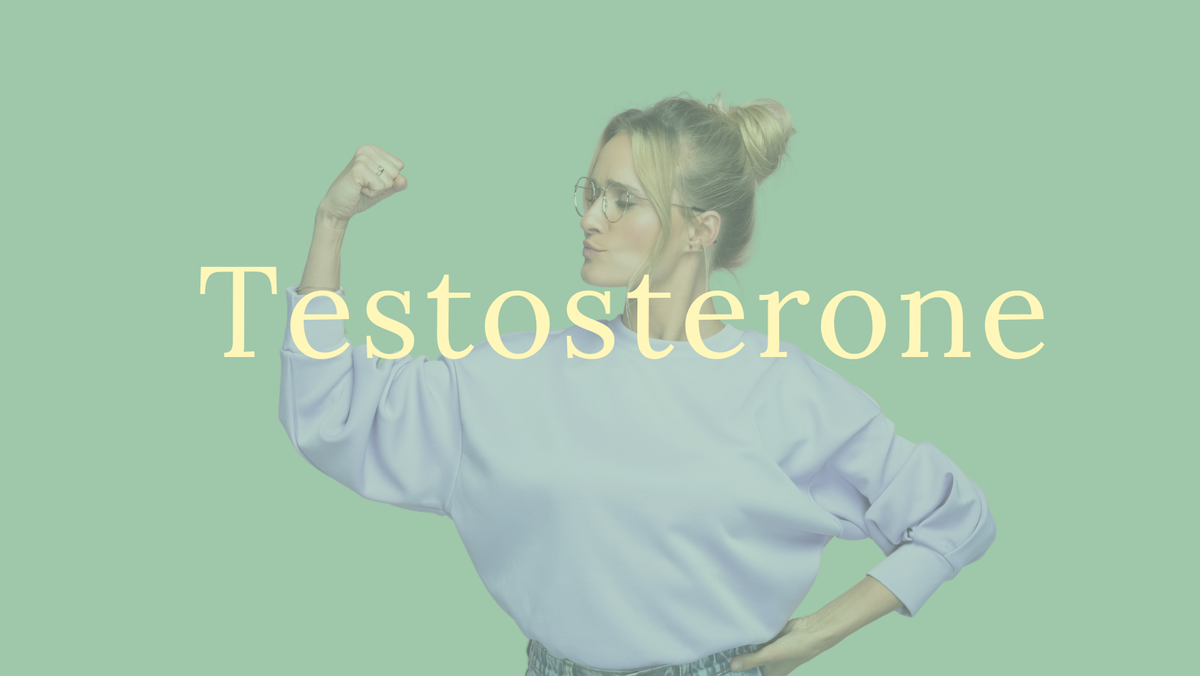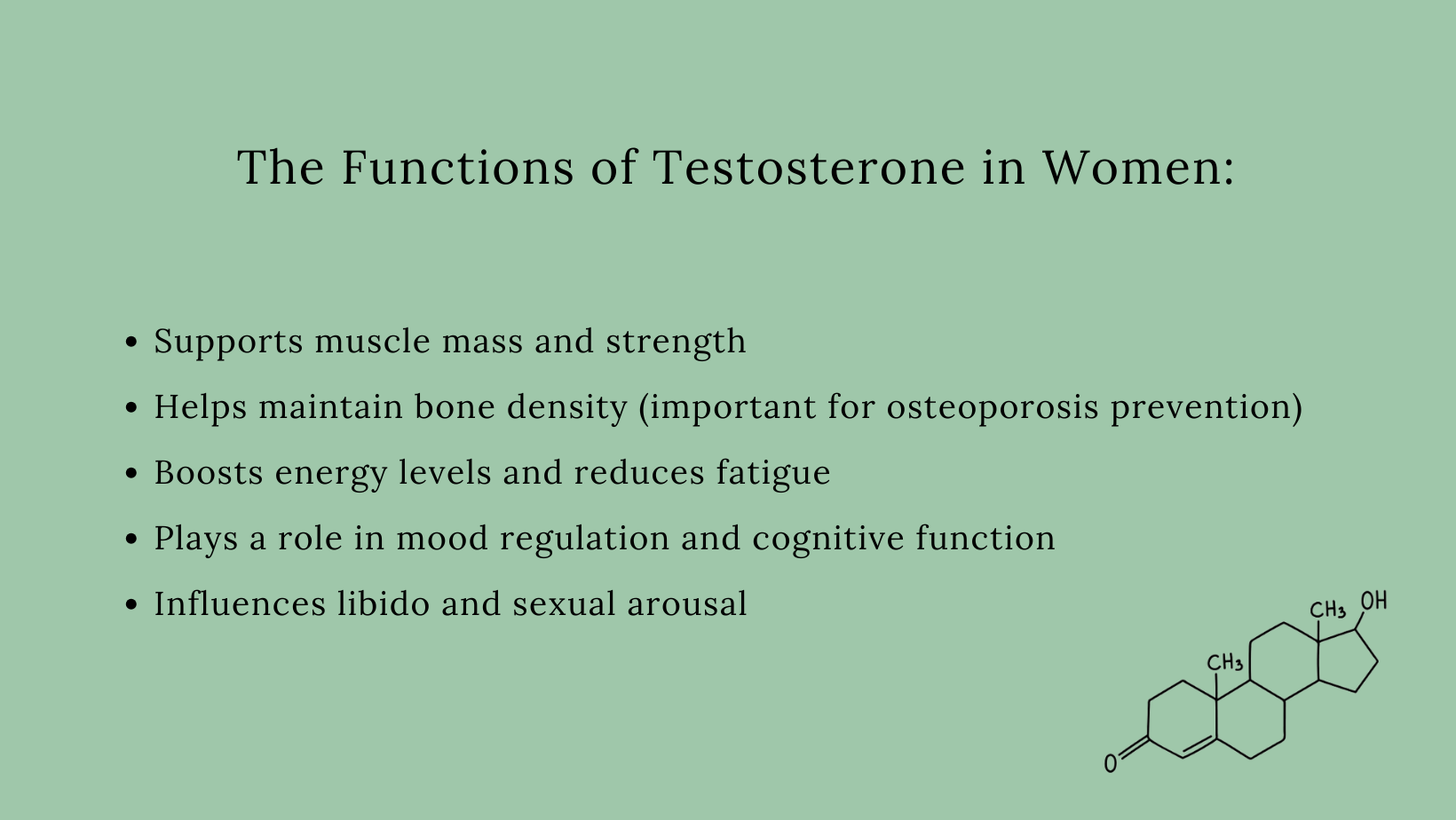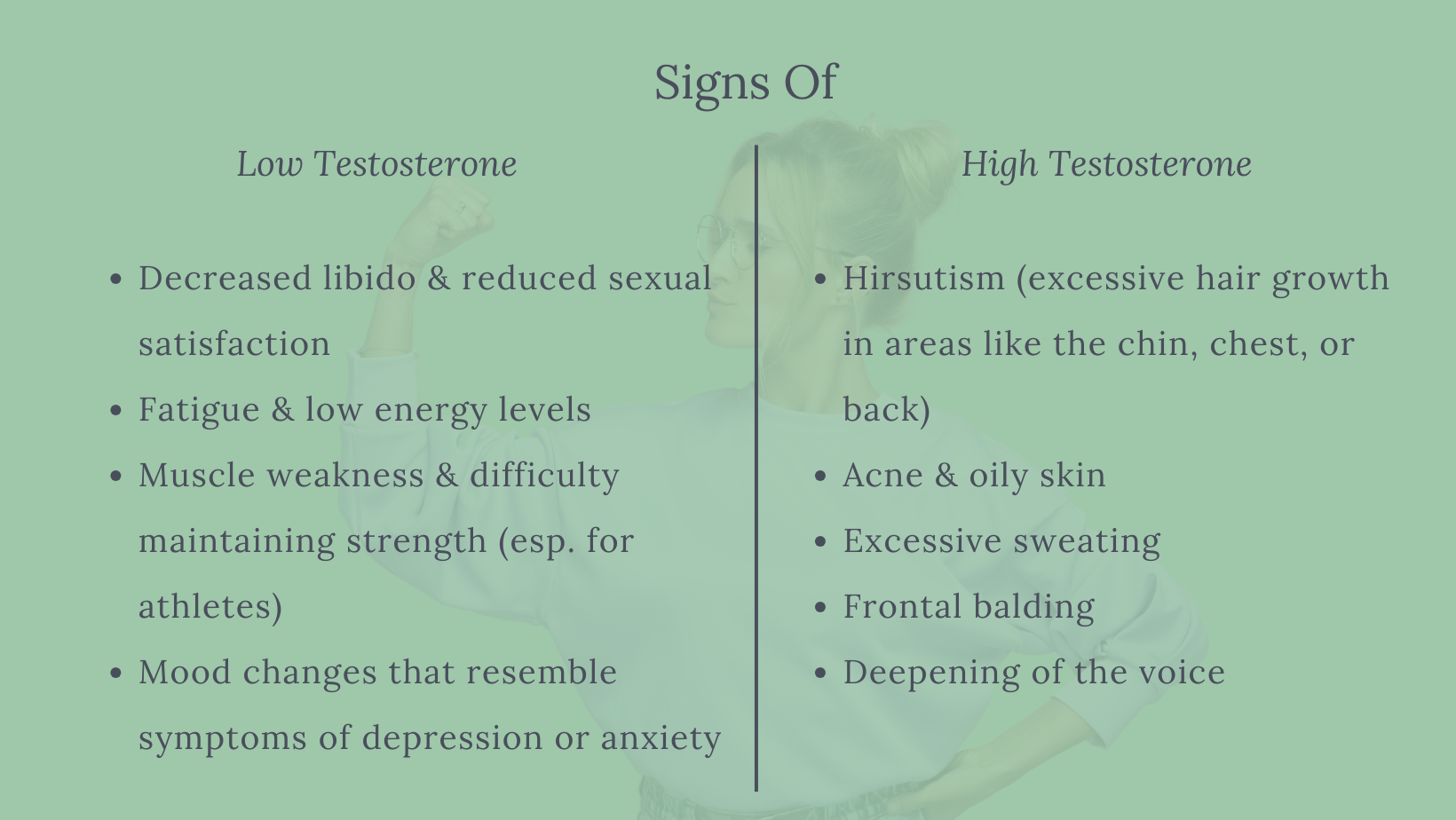Testosterone for Women: The Overlooked Hormone

Introduction: Why Should Women Care About Testosterone?
If you’ve ever heard of testosterone, chances are you associate it with men, muscle-building, and deep voices. But here’s the truth: testosterone isn’t just a “male hormone.” Women have it too, and it plays a huge role in how we feel—our energy, mood, metabolism, and even libido.
Yet, many women (and even doctors) rarely consider testosterone levels when addressing symptoms like fatigue, low motivation, muscle loss, or reduced libido. Instead, we’re often told it’s just stress, aging, or “one of those things.” But what if testosterone could be the missing piece of the puzzle?
In this post, we’ll break down everything you need to know about testosterone in women: how it fluctuates, why it matters, what happens when it’s too high or too low, and how to naturally support healthy levels.
What Is Testosterone, and Why Do Women Need It?
Testosterone is a steroid hormone that belongs to a group called androgens. It’s produced primarily in the ovaries and adrenal glands, with small amounts circulating in the bloodstream.
Best known for its role in muscle growth, protein synthesis, and bone density, testosterone also has subtle but significant effects on mood, metabolism, and libido. While its androgenic effects—like body hair growth and a deepening voice—are more pronounced in men, its anabolic effects (which build up tissues and strength) are crucial for women as well.

How Testosterone Levels Change Throughout Life
Just like estrogen, testosterone levels fluctuate over a woman’s lifetime.
- Peak Levels: During the reproductive years, testosterone is at its highest. Levels naturally decline after the age of 30.
- Perimenopause & Menopause: This is when levels take a more dramatic dip, contributing to muscle loss, fatigue, and changes in sexual function.
- Post-Menopause: Although levels remain low, the small amount produced still plays an important role in metabolism and overall well-being.
Certain lifestyle factors—like chronic stress, overtraining, or hormonal birth control—can also suppress testosterone levels earlier than expected.
Testosterone and the Menstrual Cycle: How It Naturally Fluctuates
Testosterone levels in women aren’t constant—they fluctuate throughout the menstrual cycle in a distinct pattern:
- Early Follicular Phase (Start of cycle): Testosterone levels are typically at their lowest.
- Mid-Cycle (Around Ovulation): There’s a testosterone surge, peaking due to ovarian theca cell production regulated by luteinizing hormone (LH). This increase may influence sexual activity, ovulation, and follicular development.
- Luteal Phase: Levels remain higher than in the early follicular phase .
- Late Luteal: Testosterone drops again, reaching its lowest point close to menstruation.
However, while there is a significant mid-cycle rise, daily testosterone variation is higher and independent of the menstrual cycle . That means a single measurement may not accurately reflect overall testosterone status.
Additionally, younger women tend to experience a more noticeable mid-cycle increase, while in women aged 43–47, the surge is less pronounced.

Signs of Low and High Testosterone in Women
Wondering if your testosterone might be too low? Women with low testosterone (low T) often experience:
- Decreased libido and reduced sexual satisfaction
- Fatigue and low energy levels
- Muscle weakness and difficulty maintaining strength (especially for athletes)
- Mood changes that resemble symptoms of depression or anxiety
Because these symptoms overlap with other conditions—like thyroid imbalances or chronic stress—low T is often overlooked or misdiagnosed.
On the flip side, too much testosterone can also cause issues. Around 4–7% of women have elevated testosterone levels , often linked to polycystic ovary syndrome (also known as PCOS).
Symptoms of High Testosterone Include:
- Hirsutism (excessive hair growth in areas like the chin, chest, or back)
- Acne and oily skin
- Excessive sweating
- Frontal balding
- Deepening of the voice
If you suspect high testosterone, talk to your doctor about hormone testing.
Therapeutic Potential of Testosterone for Women
While testosterone therapy is not approved for use in women in all countries, research suggests potential benefits for various health concerns:
Menopausal Symptoms: Low-dose testosterone, often combined with estrogen, may alleviate perimenopausal and menopausal symptoms .
Sexual Health: Testosterone therapy has been shown to improve sexual desire, arousal, pleasure, and orgasm in postmenopausal women.
Cardiovascular Health: Some studies suggest potential cardiovascular benefits, though more research is needed.
However, testosterone therapy should only be considered under medical supervision. It’s still being studied, and risks must be carefully weighed against benefits.
How to Increase Testosterone in Women Naturally
If your testosterone is on the lower side, there are several natural ways to support healthy levels and improve your overall well-being:
💪 Strength Train: Lifting weights 2–3 times per week increases testosterone.
🚫 Avoid Overtraining: Too much endurance cardio can decrease testosterone.
🥩 Eat More Zinc: Zinc is a powerful little mineral, which blocks the enzyme that converts testosterone to estrogen. More zinc = less converted estrogen = higher testosterone. Good sources of zinc include oysters (hence their reputed aphrodisiac abilities) and other seafood, pumpkin seeds, red meat (especially beef and lamb), and spinach.
🥦 Get Enough Magnesium: Magnesium is also believed to increase your testosterone by inhibiting testosterone from binding to its binding protein,sex hormone binding globulin (SHBG). Good sources of Magnesium are fish, beans, nuts, leafy greens.
🛌 Prioritize Sleep & Stress Management: Poor sleep suppresses testosterone.
🔥 Have More Sex: Studies show sexual activity can increase plasma testosterone levels in women .
Final Thoughts: Why Testosterone Matters for Women
If there’s one thing I want you to take away from this, it’s that testosterone isn’t just a guy thing—it’s a YOU thing.
Think about it: Have you ever felt drained, unmotivated, or like your workouts just aren’t paying off like they used to? Maybe your libido has taken a nosedive, or you’re struggling to keep up with the energy demands of work, kids, and life in general.
I get it—because I’ve been there, and so have so many other women. We’re often told these struggles are “just part of aging” or “a sign you need to slow down.” But what if they’re actually a sign of something deeper, something hormonal?
The truth is, our bodies change, our hormones shift, and we deserve to understand what’s happening. The more we tune in, the more we can make empowered choices—whether that’s adjusting how we train, prioritizing rest, or even having an informed conversation with our doctor about hormone health.
Testosterone is part of your energy, confidence, and drive. It’s what helps you build strength—both physically and mentally. So if you’re feeling off, don’t ignore it. Listen to your body, ask questions, and take action.
At the end of the day, knowledge is power—and when it comes to your hormones, that power is yours to reclaim.
